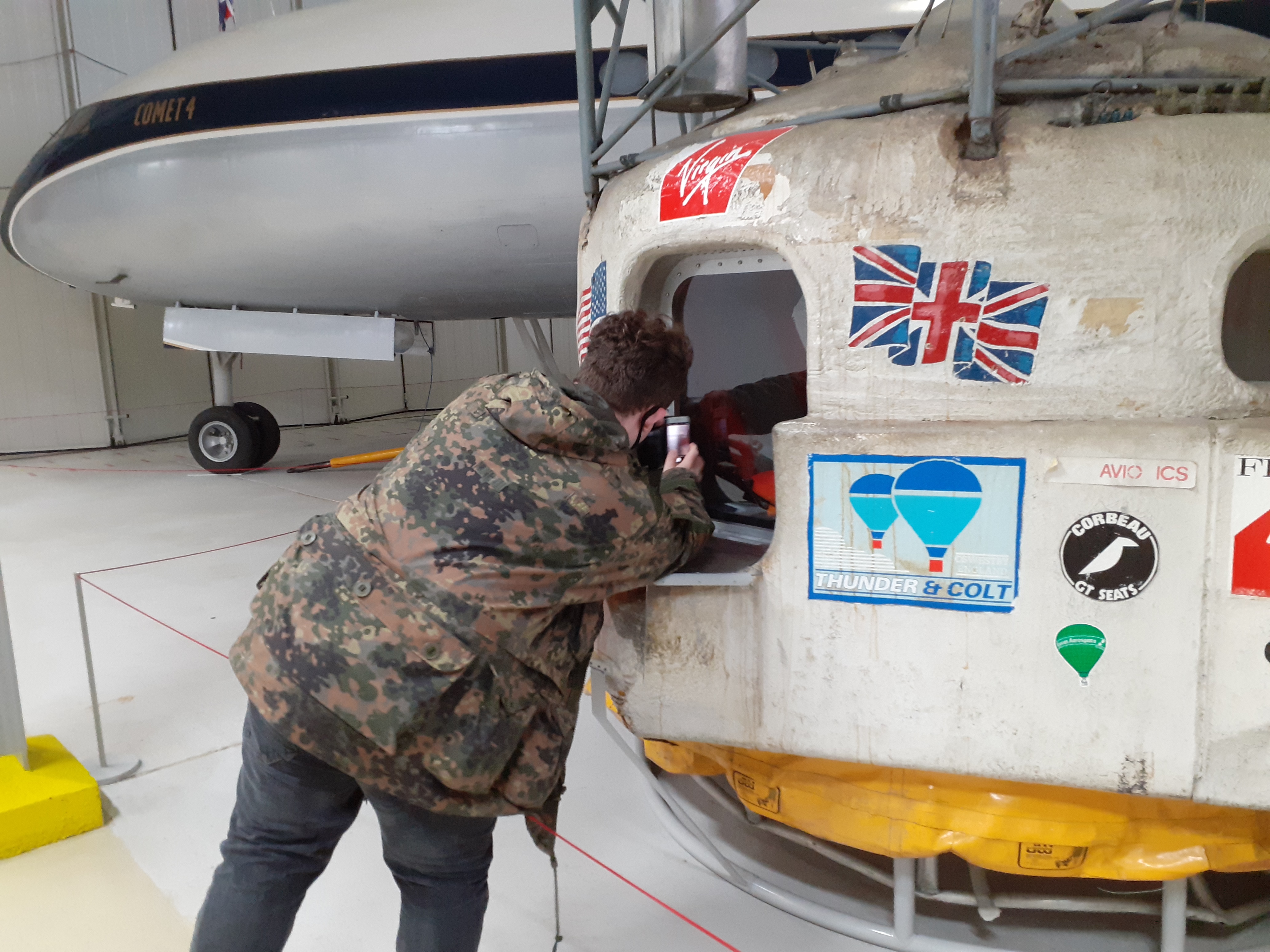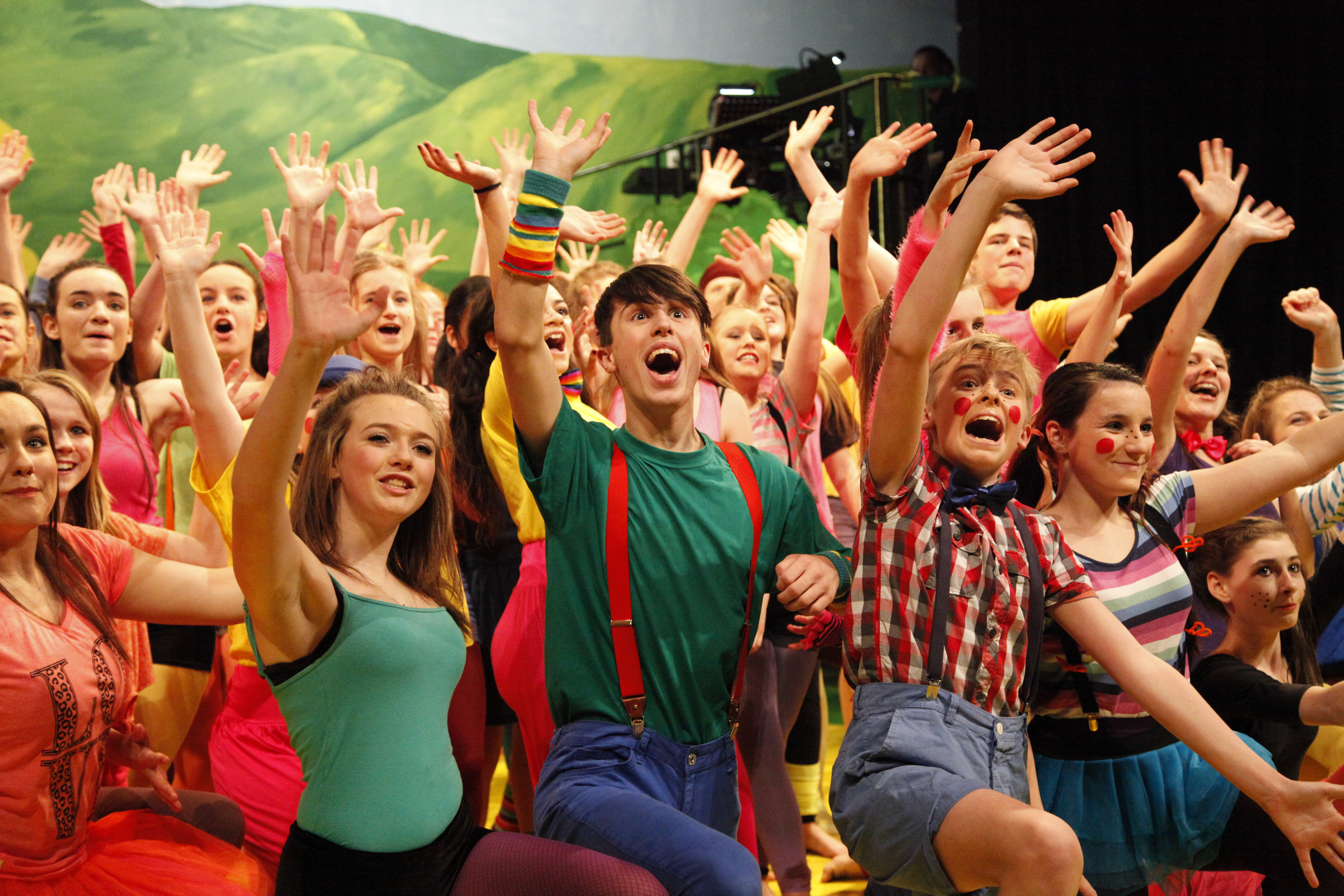
The power of creative technologies in Arts Award delivery
BY: Guest Writer
11 Aug 2025
We celebrate digital arts on the blog this month and Ade Ikoli, Arts Award Lead at Hopewell School in Essex talks through the many amazing creative technology tools their students use for their Arts Award projects as they redefine what it means to be creative in the 21st century.
At Hopewell School, we embrace emerging creative technologies through our Creative Media lessons, by embedding them as creative tools that shape how students develop, reflect, and share their artistic work across all levels of Arts Award.
Creative technology tools
Using virtual reality, students have designed and walked through their own digital art galleries, historical battlefield documentaries and futuristic architecture projects using virtual reality headsets with platforms such as Arkio (a VR spatial tool) and Unity (a real-time 3D engine used for immersive projects). These immersive spaces allow students to showcase their final pieces and narrate their inspirations, meeting the sharing and reviewing elements of Arts Award with depth and creativity.
Augmented reality has brought still artwork to life. Students have used Adobe Aero to create interactive exhibitions, where classmates can scan their artwork with a tablet to reveal 3D animations, character bios, or recorded artist statements. This turns the 'create’ and ‘share' requirements into powerful, layered experiences.
Artificial intelligence (AI) tools support and inspire creative decision-making, from music composition using platforms like Soundraw and Boomy, to scriptwriting structure support by Sudowrite. Students have also explored AI as an arts issue, raising critical questions around authorship and authenticity as part of their Gold Unit 1 Part D view on an arts issue.
Voice acting adds emotional depth and character to our Arts Award animation and game design projects. Students use Adobe Character Animator to record and sync their own voices to digital avatars, bringing their creations to life in short films and interactive games. This blends performing arts with digital production and supports students in extending their arts practice and sharing their work with others.
Esports at Hopewell is an art form in its own right. Students create original gameplay experiences, design characters, compose music and sound effects, and write narrative commentary scripts. Using tools ranging from beginner platforms like Flowlab to professional engines like Unity, along with GarageBand for music and sound design, alongside our haptic simulators and broadcasting equipment, students turn game development into a fully creative process. Commentary is scripted and recorded in our podcast suite, giving students opportunities to explore performance, storytelling, and journalism within a digital setting. Through Arts Award, Esports becomes a multi-disciplinary canvas for creativity, leadership, and artistic voice.
Together, these tools do more than support learning. They empower young people to imagine, build, and lead as 21st-century artists, turning qualifications into transformation.
Arts Award Explore: imagination into experience
At the earliest stage of our Arts Award delivery, our Explore students become digital creatives. In one project, students used Meta Quest VR headsets with Arkio to design virtual rooms, castles, and galleries. They walked through their designs in full 3D and present them to peers in a guided tour format, evidencing all four parts of Arts Award Explore in the most immersive way possible.
Elsewhere, students used AI art tools like Craiyon and Adobe Firefly to experiment with concept art, imagining fantasy creatures and reinterpreting famous paintings. One group created an AR postcard exhibition using Adobe Aero, where viewers could scan printed artwork and see it animated in 3D through their phones.
In one unit linked to geography, students working towards Explore built digital landscapes in Minecraft Education, placing key landforms and labelling them with AR pop-ups. This was shared during a showcase where they explained both their artistic decisions and the learning behind them.
Bronze: creating soundtracks, characters, and commentary
Bronze Arts Award is where our students take real ownership. One standout project involved a student producing an original game soundtrack using BandLab, layering beats, vocal effects, and samples to support the mood of a self-built game level. This contributed towards both Part A (Explore the arts as a participant) and Part B (Explore the arts as an audience member), through an Esports sharing showcase.
Others became digital artists and reviewers; one student created a podcast review of a live streamed Esports match. Using our podcast studio and Tascam Portastudio (multitrack recorder), mixing sound effects and their own voice-over commentary. Another created a 3D printed sculpture of a character they had designed digitally in Tinkercad, completing the process from concept sketch to physical artefact.
Students explored the work of practitioners like rapper Stormzy (his new movie filmed on an iPhone), AI artist Sougwen Chung (multidisciplinary artist who uses marks to explore communication between people and machines), and film director Danny Boyle (latest movie 28 years later filmed on an iPhone), reviewing their work using Adobe Express Pages (formerly Adobe Spark) and 3D video diaries. They passed on skills by leading Minecraft architecture tutorials, running AR art walks and showing others how to use Adobe Character Animator to sync lips and motion in real time.
Silver: production companies, leadership, and multi-arts mastery
For Silver Arts Award, our students step into production company roles, via the Hopewell Creative Media Work Experience model. They lead teams and manage real world creative briefs. One group, through the Hopewell Play Lab (student game design company), produced interactive games for the school’s primary students. They used Unity, Procreate, Flowlab and GarageBand software, combining coding, illustration, sound design, and voice acting. This fulfilled their Arts challenge (Unit 1 Part A), Arts research (Unit 1 Part D) and Leadership project (Unit 2) in one multi-disciplinary and detailed burst of creativity.
Another Silver student produced a short sci-fi film using green screen filming, DaVinci Resolve for editing, and FL Studio to compose an original score. They built a set in VR, filmed live acting with tracked avatars, and hosted a premiere screening with a Q&A , all captured as part of their leadership evidence.
Students have used AI script tools like Sudowrite to help structure ideas. Others used sketching in Adobe Fresco, photogrammetry scanning, and 3D mapping in SketchUp to recreate real locations like the Colosseum or Tower of London in immersive 3D, linking history and geography directly into their creative practice.
Gold: leading with innovation, questioning with purpose
Our Gold Arts Award students create with depth, lead with confidence, and ask bold questions about the future of art.
For Unit 1, one student explored AI collaboration in music production, creating a fully original rap song where part of the backing track was AI generated through detailed creative prompts, and the vocals were their own. They filmed the music video using Adobe Premiere Pro, lip synced through Adobe Character Animator, and published a reflective documentary asking: ‘Is using AI in art still authentic?’
Another Gold student built a virtual museum on World War II using Blender, Unity HDRP, and voice recordings layered with atmospheric audio. Visitors could explore 3D exhibits, hear immersive soundscapes, and view student-made artefacts, all part of the student’s own arts practice.
In their leadership projects, students ran live events including an Esports championship with commentary, a gallery installation using AR, and a youth radio broadcast using Loupedeck Live decks.
Cross-curricular creativity: maths, science, literacy, geography
At every stage, our Arts Award delivery connects with core subjects through creative practice.
- Maths: Used in beat production, 3D modelling, and animation timing
- Science: Linked through VR labs, aerodynamics in car design, and soundwave editing
- English: Embedded via scriptwriting, lyric analysis, review writing, and podcasting
- Geography: Explored in AR landscapes, cultural research, and museum reconstructions
These technologies don’t just enhance learning, they empower it. Through Arts Award, students aren’t just learning subjects, they’re creating through them.
The Arts Award framework allows us to honour our students as artists, regardless of their academic profile. By embedding cutting edge creative technologies into each level, we offer real-world, future facing platforms for students to grow, experiment, and lead. From music production and animation to virtual exhibitions and Esports broadcasting, our learners are not just meeting the Arts Award requirements, they’re redefining what it means to be creative in the 21st century.
At Hopewell, we believe technology is not the opposite of art. It is a new brush, a new stage, a new voice and our Creative Media lessons (where our students do Arts Award) is where it comes together.
Ade Ikoli is a Pearson National Teaching Award winner 2025 for ‘Transformational Use of Digital Technology’ and also a Bett Excell London IFIP Global Inclusion Award winner 2025 for ‘The use of technology in education’.
Photo: VR simulator and expedition by Hopewell School
Related posts
BY: Guest Writer
BY: Guest Writer
BY: Guest Writer




Comments & Replies